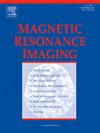Age-related change of glymphatic function in normative children assessed using diffusion tensor imaging-analysis along the perivascular space
IF 2
4区 医学
Q2 RADIOLOGY, NUCLEAR MEDICINE & MEDICAL IMAGING
引用次数: 0
Abstract
Background
The glymphatic system, crucial for brain waste removal and homeostasis, has an underexplored developmental trajectory in children. This study describes changes in glymphatic function during childhood via diffusion tensor imaging-analysis along the perivascular space (DTI-ALPS).
Methods
We retrospectively studied DTI MR images of 72 pediatric participants (mean age = 92.37 months; 0–19.8 years; 50 % females), all showing normal MRI findings from 2019 to 2022. Imaging utilized 3 T scanners with a DTI sequence of 21 diffusion-encoded gradients, focusing on the ALPS index to assess glymphatic function. Clinical outcomes were determined using the Pediatric Cerebral Performance Category Scale and medical records within two weeks post-MRI. Regions-of-interest on diffusion maps were selected manually, guided by fractional anisotropy maps, for automatic ALPS computation. Pearson correlation and multiple linear regression analyzed the relationship between ALPS indices, age, and clinical scores, with a paired t-test comparing bilateral ALPS indices. Significance was set at P < 0.05.
Results
Significant positive correlations between age and both left (R = 0.510, P < 0.001) and right (R = 0.688, P < 0.001) DTI-ALPS indices were observed, indicating developmental changes in glymphatic function. Age alone significantly predicted the DTI-ALPS indices (left ALPS: adjusted R2 = 0.235; right ALPS: adjusted R2 = 0.460), underscoring its developmental trajectory. The study found no significant differences between left and right DTI-ALPS indices, suggesting symmetrical glymphatic function during childhood.
Conclusion
This study reveals developmental changes in the glymphatic system across childhood, demonstrating an age-related increase in glymphatic function and bilateral symmetry.
使用沿血管周围空间扩散张量成像分析评估正常儿童淋巴功能的年龄相关变化
在儿童中,淋巴系统对脑废物的清除和体内平衡至关重要,其发育轨迹尚未得到充分的研究。本研究通过沿血管周围空间的弥散张量成像分析(DTI-ALPS)描述了儿童时期淋巴功能的变化。方法回顾性研究72例儿童受试者的DTI MR图像(平均年龄92.37个月;0 - 19.8年;50%为女性),在2019年至2022年期间均显示正常的MRI结果。成像使用3台T扫描仪,DTI序列为21个扩散编码梯度,重点关注ALPS指数以评估淋巴功能。临床结果采用小儿脑功能分类量表和mri后两周内的医疗记录来确定。在分数各向异性图的指导下,手动选择扩散图上的兴趣区域进行自动ALPS计算。Pearson相关和多元线性回归分析了ALPS指数、年龄和临床评分之间的关系,配对t检验比较了双侧ALPS指数。P <;0.05.结果年龄与左、右均呈正相关(R = 0.510, P <;0.001)和右(R = 0.688, P <;0.001) DTI-ALPS指数显示淋巴功能的发育变化。年龄单独对DTI-ALPS指数有显著预测作用(左ALPS:调整后R2 = 0.235;右ALPS:调整后R2 = 0.460),突出其发展轨迹。研究发现左右DTI-ALPS指数无显著差异,提示儿童时期淋巴功能对称。结论本研究揭示了整个儿童时期淋巴系统的发育变化,表明淋巴功能和双侧对称性的增加与年龄相关。
本文章由计算机程序翻译,如有差异,请以英文原文为准。
求助全文
约1分钟内获得全文
求助全文
来源期刊

Magnetic resonance imaging
医学-核医学
CiteScore
4.70
自引率
4.00%
发文量
194
审稿时长
83 days
期刊介绍:
Magnetic Resonance Imaging (MRI) is the first international multidisciplinary journal encompassing physical, life, and clinical science investigations as they relate to the development and use of magnetic resonance imaging. MRI is dedicated to both basic research, technological innovation and applications, providing a single forum for communication among radiologists, physicists, chemists, biochemists, biologists, engineers, internists, pathologists, physiologists, computer scientists, and mathematicians.
 求助内容:
求助内容: 应助结果提醒方式:
应助结果提醒方式:


